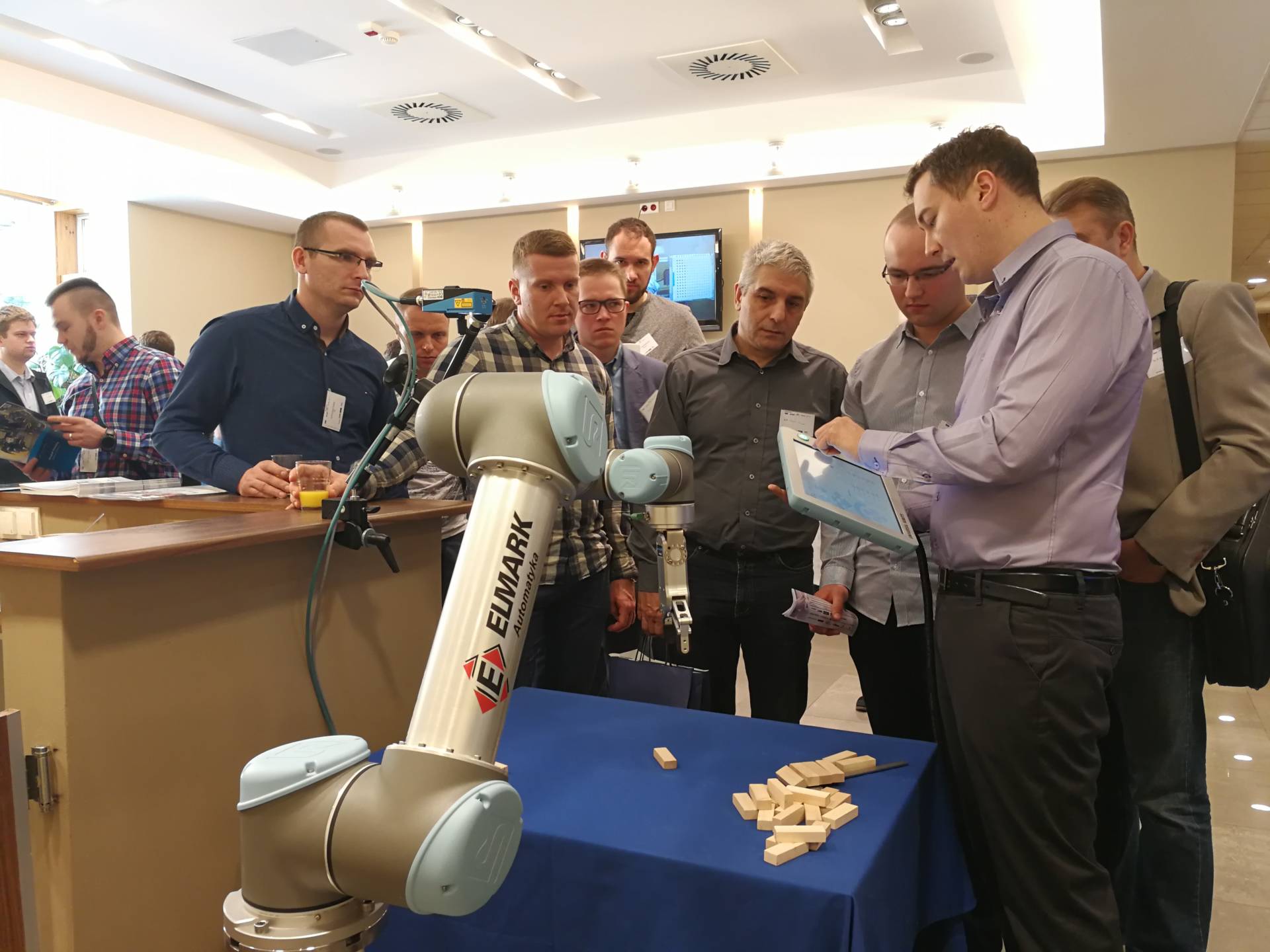
Co-robotisation in theory and practice
Implementing cooperative robots is simpler and more accessible than ever, as discussed at the meeting organised by PIAP and Elmark Automatyka.
Co-robotisation is slowly becoming a must-have. Many enterprises and manufacturers fear new implementations are unfamiliar with the practices or think they are out of financial reach. All the doubts were dispelled by the conference “Cooperative robots – Industry 4.0” organised by the Industrial Institute for Automatics and Measurements PIAP and Elmark Automatyka. At the event, the guests had a chance to learn about the practical applications and benefits of using collaborative robots and how to get funding for the investment. The conference was sponsored by the Ministry of Enterprise and Technology.
What is Industry 4.0?
PIAP, where the event took place, actively creates new and advanced Industry 4.0 solutions in automation and robotisation. Yet, the practical dimension is not all and the institute also organizes educational events. Such initiatives are critical, since many industry players, in particular small and medium-sized enterprises, are not familiar with Industry 4.0 and the benefits the fourth industrial revolution might bring to their businesses- says professor Piotr Szynkarczyk, director of the Industrial Research Institute for Automation and Measurements PIAP.
Co-robots – where do they perform best?
Cooperative robots are one of the key and critical components of the fourth industrial revolution – easy to configure and effective when teamed with humans in product manufacturing. In most cases, robots with built-in force and power functions, do not require additional safety systems that take up extra space and increase the application costs. The co-robots can be of great advantage to the companies that cannot afford to implement industrial robots or upgrade the existing factories – explains Tomasz Ofiara, Sales Manager at Elmark Automatyka.
Co-robot is not all it takes – safety zones, safety scanners, visual systems and grippers
Universal Robots is one of the leading manufacturers of cooperative robots including UR3, UR5 and UR10. Elmark Automatyka is one of their distributors in Poland. Two exhibition stands presented by the company were hugely popular with guests.
One of the stands showcased operation of the robotic equipment with safety zones using SICK microScan3 Core safety scanner connected to the safety inputs on the control panel of UR3 robot. At the second stand, the cooperative robot UR5 with SICK PIM50 visual system transferred the workpieces placed on the table to the designated areas.
The grippers are a key component of co-robots. Practical applications has been presented at the joint PIAP and SICK stand showcasing UR3 robots with SCHUNK gripper and UR10 robots with PIAB vacuum gripper. The robot’s operation simulated an automatic warehouse good receipt process.
Automatic palletisation – a practical co-robot application
The guests had a chance to learn about the capabilities of collaborative robots not only at the demonstration stands, but also based on the implemented projects. Marek Petz, PIAP expert on robotic industrial applications, discussed the implementation of UR robot by the Institute in one of the manufacturing plants.
– We have constructed three workstations for palletisation of coolant supply tubes for vehicle radiators manufactured by the client. The tubes are fed to the forming machine. To shorten the cycle time, we have used a double gripper, removing one tube and inserting another at the same time. We have used UR10 robot due to the range required for the pallet and the machine. The workstations have been completed 2.5 years ago and have been operating failure-free in a three-shift pattern, which is the best recommendation both for UR robots and PIAP, observes Marek Petz.
Public funds for co-robotisation – up to PLN 340,000
Enterprises need funds for implementation of innovative cooperative robots and Industry 4.0 solutions. The available sources of public financing for innovative technologies were discussed by Krzysztof Lipiec, president of PIAP-ScienTech. The company offers assistance in applying for financing for the research projects and research and development projects.
The maximum public aid, i.e. de minimis aid can be up to 85% of the total service value. Minimum value of the qualifying project costs is PLN 60,000 (including PLN 51,000 funding), and the maximum is PLN 400,000 (including PLN 340,000 funding).
Tax relief for co-robotisation – up to 100% of the qualifying costs.
Development and implementation of innovations is greatly facilitated by the tax relief discussed by Beata Cichocka-Tylman, PwC director for innovation, R+D, subsidies and tax reliefs. – In January 2018, new regulations has been introduced to significantly increase the tax relief – Today, the entrepreneurs can use a tax relief of 100% on qualifying costs, and the catalogue of qualifying costs has been expanded to increase the attractiveness of the tax relief – says Beata Cichocka-Tylman.
(Photo: Monika Jurek, Elmark Automatyka)



